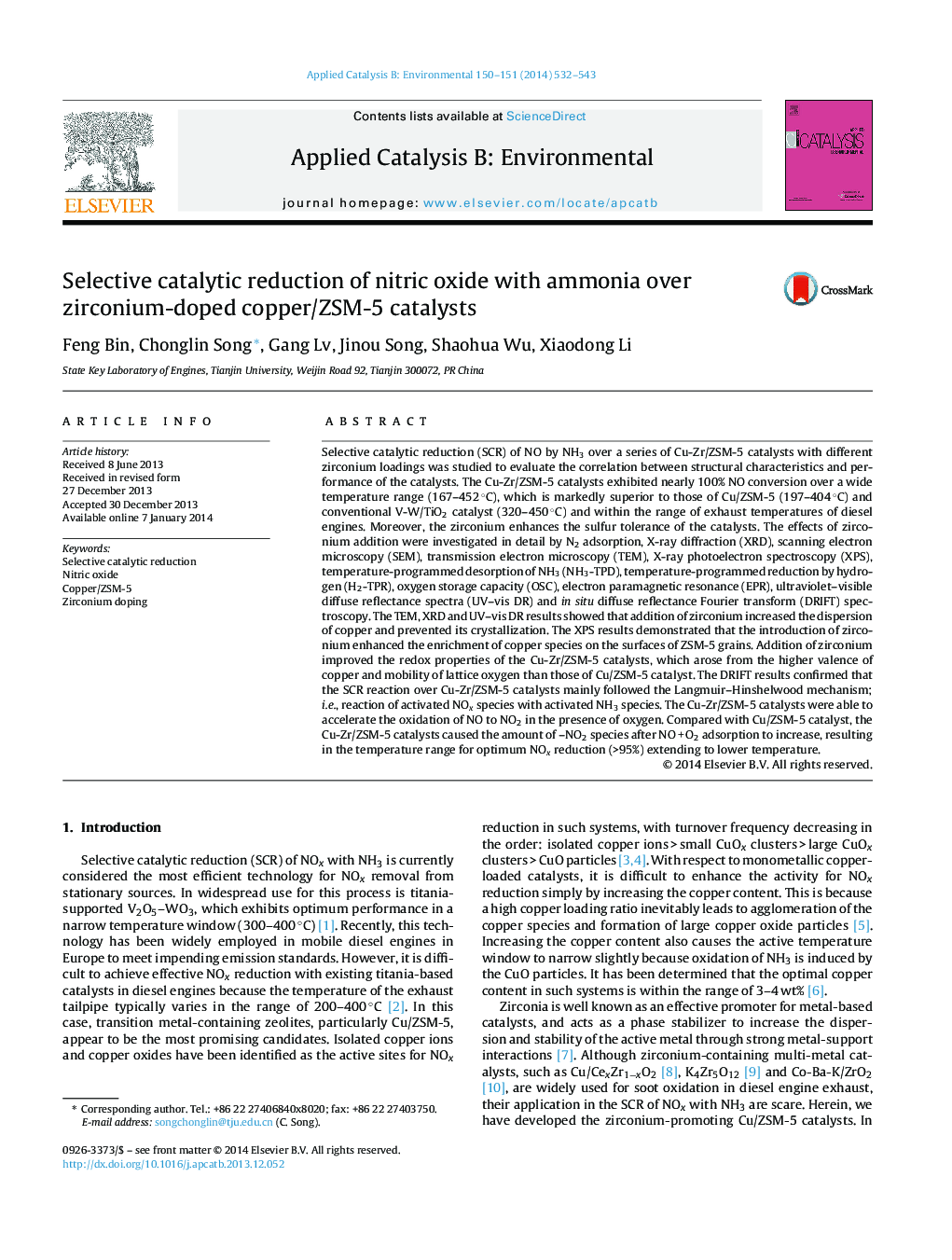| Article ID | Journal | Published Year | Pages | File Type |
|---|---|---|---|---|
| 45961 | Applied Catalysis B: Environmental | 2014 | 12 Pages |
•Zirconia introduction favors copper dispersion and inhibits copper crystallization.•Zirconia addition is beneficial to enriching copper species on the ZSM-5 surface.•The interaction between copper and zirconium enhances the lattice oxygen and site reducibility.•The Cu-Zr/ZSM-5 presents a wide activity window within the range of diesel exhaust temperatures.
Selective catalytic reduction (SCR) of NO by NH3 over a series of Cu-Zr/ZSM-5 catalysts with different zirconium loadings was studied to evaluate the correlation between structural characteristics and performance of the catalysts. The Cu-Zr/ZSM-5 catalysts exhibited nearly 100% NO conversion over a wide temperature range (167–452 °C), which is markedly superior to those of Cu/ZSM-5 (197–404 °C) and conventional V-W/TiO2 catalyst (320–450 °C) and within the range of exhaust temperatures of diesel engines. Moreover, the zirconium enhances the sulfur tolerance of the catalysts. The effects of zirconium addition were investigated in detail by N2 adsorption, X-ray diffraction (XRD), scanning electron microscopy (SEM), transmission electron microscopy (TEM), X-ray photoelectron spectroscopy (XPS), temperature-programmed desorption of NH3 (NH3-TPD), temperature-programmed reduction by hydrogen (H2-TPR), oxygen storage capacity (OSC), electron paramagnetic resonance (EPR), ultraviolet–visible diffuse reflectance spectra (UV–vis DR) and in situ diffuse reflectance Fourier transform (DRIFT) spectroscopy. The TEM, XRD and UV–vis DR results showed that addition of zirconium increased the dispersion of copper and prevented its crystallization. The XPS results demonstrated that the introduction of zirconium enhanced the enrichment of copper species on the surfaces of ZSM-5 grains. Addition of zirconium improved the redox properties of the Cu-Zr/ZSM-5 catalysts, which arose from the higher valence of copper and mobility of lattice oxygen than those of Cu/ZSM-5 catalyst. The DRIFT results confirmed that the SCR reaction over Cu-Zr/ZSM-5 catalysts mainly followed the Langmuir–Hinshelwood mechanism; i.e., reaction of activated NOx species with activated NH3 species. The Cu-Zr/ZSM-5 catalysts were able to accelerate the oxidation of NO to NO2 in the presence of oxygen. Compared with Cu/ZSM-5 catalyst, the Cu-Zr/ZSM-5 catalysts caused the amount of –NO2 species after NO + O2 adsorption to increase, resulting in the temperature range for optimum NOx reduction (>95%) extending to lower temperature.
Graphical abstractFigure optionsDownload full-size imageDownload as PowerPoint slide
